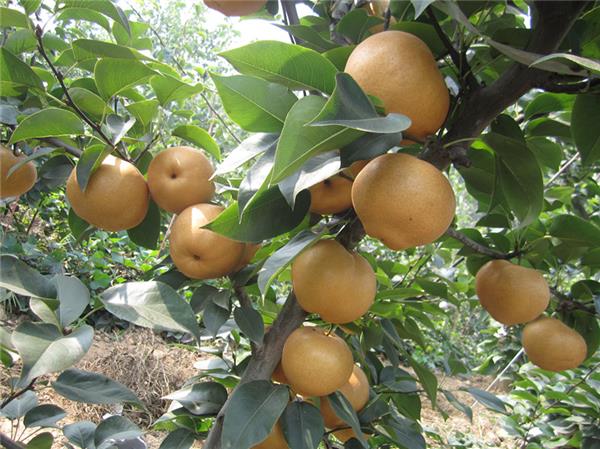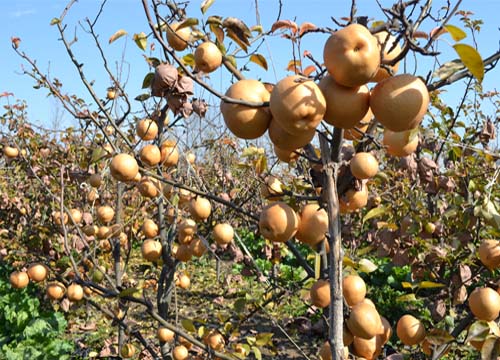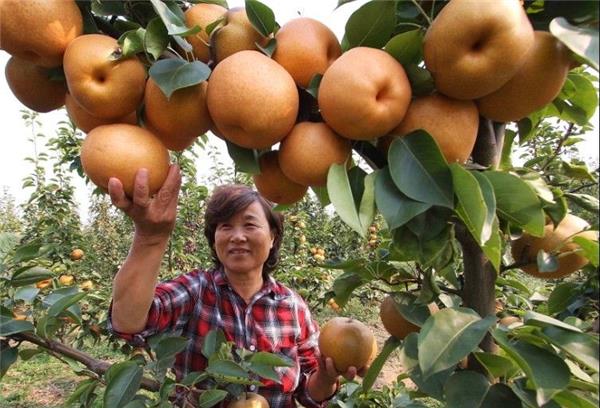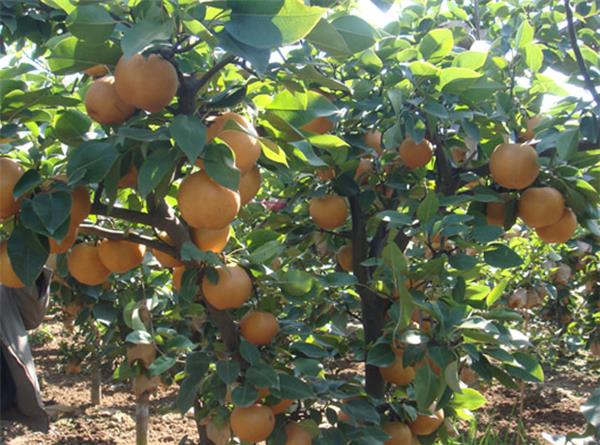Cultivation techniques of late Autumn Yellow Pear
Fruit has become an indispensable part of our lives, people can not attend a variety of occasions without it, its existence value is very high. We can eat it after meals or during entertainment time, it is very helpful to our life, so people's demand for fruit is very large. But now a lot of fruit is getting bigger and more refined, it is eating a lot of drugs on it, it is harmful to people's health. When the conditions in life permit, we eat the fruits we grow together as much as possible, which is more conducive to the growth of our healthy life. The late autumn yellow pear is a kind of fruit, which is very welcomed by many people. Let's get up and see how much the late autumn yellow pear seedlings cost, as well as the introduction of the planting techniques of late autumn yellow pear.

Cultivation techniques of late Autumn Yellow Pear
Late autumn yellow pear seedlings are easy to manage, self-pollination, florescence is April 12-14, there is no need to collect cross-pollination, about October 5 is the picking time: strong disease resistance, only need to spray low-toxic biological pesticides 5-6 times a year; "two once", cut only once a year and pull only once in a lifetime.
Planting method and sequence
a. When planting ordinary soil on flat land, after placing the roots of the seedlings in a tree pit filled with the upper soil of the half-pit, seal a small amount of soil, then lift it up a little 5-10 centimeters, and then cover the soil and water it thoroughly. Seal the soil when the water seeps dry. After sealing the soil, the grafting site should be flat with the ground, and the grafting position should be about 3 cm higher than the ground, which should be flexibly mastered according to the height of the grafting site.
b. Slopes, sandy soils that are not easy to conserve water, or plots with insufficient water sources can be planted with a spoonful of water-retaining agent in the tree pit.
c. When planting in low-lying land and waterlogged land, shallow digging and shallow planting should be done, and the roots should be covered with more soil.

The purpose and requirements of fixed drying
a. After planting and covering the soil, cut off the tree trunk 40 centimeters above the ground, and the cut can be painted to prevent it from drying. After that, the ridges and furrows for watering must be cultivated in parallel. Those who plant in the wheat field must hoe the 3-4 ridge wheat seedlings in the tree rows and cultivate the ridges so that they can be watered and ventilated in case of drought, otherwise the seedlings will die because they cannot be watered.
b. The saplings should be watered once when it does not rain about 20 days after planting, and there should be no shortage of water during this period, so as not to affect the survival.
The purpose and requirement of fixing the stem of yellow pear seedlings in late autumn:
(1) after planting and covering the soil, cut off the tree trunk 40 cm above the ground and wipe the cut with paint to prevent it from drying. After that, the ridges and furrows for watering must be cultivated in parallel. Those who plant in the wheat field must hoe the 3-4 ridge wheat seedlings in the tree rows and cultivate the ridges so that they can be watered and ventilated in case of drought, otherwise the seedlings will die because they cannot be watered.
(2) the saplings should be watered once when it does not rain about 20 days after planting, and there should be no shortage of water during this period, so as not to affect the survival.

Interplanting and facilities of orchard crops:
Interplanting is the main source of income in the first two years of the orchard. Improper interplanting crops will directly affect the economic income of farmers and the growth of fruit trees. Generally speaking, orchard interplanting can not grow corn, cotton and other high-stem crops, the most suitable for growing garlic, vegetables, peanuts, melons, peas or low-stem Chinese herbal medicine and so on.
Management and requirements after planting yellow pear seedlings in late autumn of that year:
1. Plastic film mulching: it can not only keep warm and moisturizing, but also store the root development of the seedling and improve the survival rate.
two。 Cultivate good ridges and furrows: first of all, you must cultivate good watering ridges, which can be watered once every 20 days when it doesn't rain.
3. Timely survival: after the new buds of yellow pear seedlings are extracted in late April, some of the seedlings that do not sprout or branch should be sprayed and irrigated in time until they survive. If not dealt with in time, missing the best period will lead to diseased plants or death of the seedlings.
4. Timely watering: during the period from planting to wheat harvest in late autumn yellow pear seedlings should be watered at least 3-4 times according to the weather conditions without rain or heavy rain. Before June, if the sapling is short of water, it will affect the fruit, the second is to draw few or no new branches, and the third is that the branches are short and grow slowly or not.

Note: Orchard interplanting is the main source of income in the first two years of the orchard. Improper interplanting crops will directly affect the economic income of farmers and the growth of fruit trees. Generally speaking, orchard interplanting can not grow corn, cotton and other high-stem crops, the most suitable for growing garlic, vegetables, peanuts, melons, peas or low-stem Chinese herbal medicine and so on.
Improper interplanting crops will directly affect the economic income of farmers and the growth of fruit trees. Generally speaking, orchard interplanting can not grow corn, cotton and other high-stem crops, the most suitable for growing garlic, vegetables, peanuts, melons, peas or low-stem Chinese herbal medicine and so on.
Related
- Wuhan Hospital Iron Tree Blooming Result Was Instantly Frightened by the Gardener Master
- Which variety of camellia is the most fragrant and best? Which one do you like best?
- What is the small blue coat, the breeding methods and matters needing attention of the succulent plant
- Dormancy time and maintenance management of succulent plants during dormancy
- Minas succulent how to raise, Minas succulent plant pictures
- What are the varieties of winter succulent plants
- How to raise succulent plants in twelve rolls? let's take a look at some experience of breeding twelve rolls.
- Attention should be paid to water control for succulent plants during dormant period (winter and summer)
- Watering experience of twelve rolls of succulent plants
- Techniques for fertilizing succulent plants. An article will let you know how to fertilize succulent plants.



